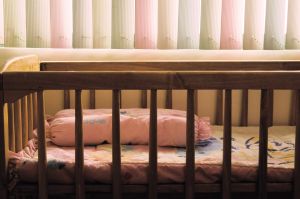By David Wolf, Attorney
Published by Child Injury Lawyer Network

At day care centers, it is important that child care providers follow policies, procedures, and safety recommendations as to the activities that take place at the day care center. One such responsibility or duty is the monitoring of children during nap or sleep time. While nap or sleep time may not seem like a dangerous activity to some, the truth of the matter is it the children in day care centers that are not properly monitored during nap or sleep time can suffer serious personal injuries if safety precautions are not followed or if there is a lack of supervision or monitoring of the children during nap or sleep time. Some children (especially infants) can even die as a result of lack of supervision and lack of proper positioning during sleep or nap time.
When selecting a day care center, it is important for a parent to select a day care center that is properly licensed. Furthermore, it is vital that the owner, administrator, and staff at the day care center understand the needs of children at the various age levels. For instance, the care necessary for an infant is different than that for tobbler which is different than that for an elementary school-age child. Each age group brings about unique risk and dangers associated with the behavior of the child as well as the abilities and needs of the child. When selecting and remaining with the a day care center, the parent should make sure that the facility has policies and procedures in place as to sleeping and nap time. Furthermore, it is vital that the staff members have training and experience in the proper positioning of the child especially when it comes to sleep positions and the proper bedding for the child.
The American Academy of Pediatrics has set forth guidelines for day care centers and child care providers and parents and others as to the proper position of children for sleeping. It is important that these guidelines are followed. The simple act of leaving a stuffed animal or blanket in a crib of an infant can be deadly. Blankets, loose bedding, stuffed animals, and other objects can lead to personal injuries of the child including those related to suffocation and asphyxiation of the child.
In Pennsylvania, it was recently reported that a home day care center operator lost her license after a State of Pennsylvania Department of Public Welfare investigation determined that an infant was put to sleep in a queen size bed on his stomach. Jasaan Z. Feliciano was found unresponsive at the home day care center of Deborah Terry Thompson. The day care center operator has a right to appeal the revocation / suspension of the day care center license. Pennsylvania day care center regulations require that day care centers follow the guidelines set forth by the American Academy of Pediatrics. These guidelines state that a child should be put to sleep on the back on a firm age appropriate mattress. The sheet should be fitted and no toys or other soft bedding or stuffed animals should be in the bedding with the child. The guidelines further state that the child should never be put to bed or sleep in an adult bed, water bed, sofa, chair, cushions or pillows.
As for the incident and unfortunate death of Jasaan Z. Feliciano, you can read more about this matter at Death of Child at Day Care Center – Investigation Pending – Cause of Death Uncertain.
State regulations require child care providers to follow the American Academy of Pediatrics recommendations for sleeping positions unless there is a medical reason, which must be documented and kept on file at the facility.
The American Academy of Pediatrics website says infants should be put to sleep on the backs on a firm age-appropriate mattress with a fitted sheet free of toys and other soft bedding and never on an adult bed, chair, sofa, water bed, pillows or cushions.
The book titled – The ABCs of Child Injury – Legal Rights of the Injured Child – What Every Parent Should Know – has chapters on Day Care Center Injuries, School Injuries, Playground Injuries, Damages / Compensation, and other topics. You can get this book for free at The ABCs of Child Injury.
 Child Injury Lawyer Blog
Child Injury Lawyer Blog

